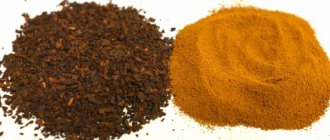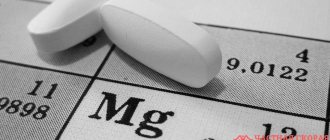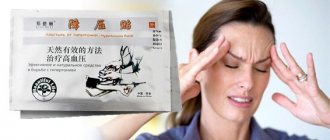Created in the middle of the last century, the tranquilizer Phenazepam has long helped to cope with mental illness, overcome fear, anxiety and panic attacks. However, this drug has many side effects; it “clouds” consciousness, provokes hallucinations and leads to the formation of severe addiction. If the dosage is violated, the drug can be not only harmful, but also dangerous. Today, this drug is practically not used in medicine; milder drugs are chosen as sedatives.
- Drug Phenazepam
- What is Phenazepam?
- Composition of Phenazepam
- Photo of the drug: what it looks like
- Effect of Phenazepam: narcotic effect
- Duration of action of Phenazepam
- Why is the drug in demand among drug addicts?
- Side effects of Phenazepam: why it’s dangerous
- Release form of Phenazepam
- Signs of using Phenazepam
- How long does Phenazepam leave the body?
- How long does it stay in the blood?
- How long does it stay in urine?
- Consequences of taking Phenazepam: effect on the body
- Phenazepam poisoning
- Weakness from use
- Reduces blood pressure
- Pregnancy and phenazepam
- How much Phenazepam can you take without getting used to it?
- Dependence on Phenazepam
- Signs of overdose
- Withdrawal from Phenazepam
- Treatment of addiction to Phenazepam
We will select an individual treatment plan
Free consultation 8-800-200-27-23
But drug addicts still “get” Phenazepam in pursuit of new sensations and fall into a strong addiction, without even thinking about how quickly the brain and nervous system are destroyed. Today, a fair number of patients in the drug treatment department of a psychiatric hospital are drug addicts on Phenazepam. Many of them have lost basic self-care skills and will never be able to get rid of mental disorders.
Drug Phenazepam
The effect of phenazepam is similar to intoxication with alcoholic drinks, so former alcoholics often switch to this drug. However, they do not think that this tranquilizer has an extremely negative effect on the nervous system and irreversible mental illness.
When you first take a psychoactive substance, a feeling of relaxation comes, relaxes the muscles, so the addict can feel lightness and serenity. The drug greatly slows down the functioning of the nervous system, so the person becomes inhibited, all reflexes are dulled, and problems arise with the perception of sounds and visual images.
What is Phenazepam?
Phenazepam is a powerful tranquilizer with a very crude effect, which has a lot of side effects and leads to the formation of severe addiction. In the mid-20th century, it was used to treat insomnia, anxiety, and as an anticonvulsant for epilepsy. It is produced in tablets or injections for intramuscular administration. The therapeutic effects of the drug are due to the effect of the active substance on benzodiazepine receptors.
The stimulating effect of the substance penetrates the reticular formation, nonspecific centers of the thalamus and the amygdala complex. The sedative effect is achieved by blocking spinal reflexes. The active substance is distributed throughout the body through the gastrointestinal tract, processed in the liver and excreted by the urinary system.
HOW TO MOTIVATE A DEPENDENT FOR TREATMENT
Composition of Phenazepam
The active component of phenazepam is bromodihydrochlorophenylbenzodiazepine .
This active substance blocks the work of many receptors and inhibits the activity of neural connections. Due to this, anti-anxiety, sedative and anticonvulsant effects are achieved. The drug has multiple contraindications and can cause addiction.
Photo of the drug: what it looks like
Effect of Phenazepam: narcotic effect
Pharmacy addicts regularly use the drug to achieve a feeling of euphoria and tranquility, but obtaining a sedative is not easy (a prescription from your doctor is required). This effect on the body is due to the fact that the active substance belongs to the group of benzodiazepines. After entering the blood, it slows down polysynaptic spinal reflexes and also minimizes the excitability of subcortical brain structures. Because of this, attacks of anxiety and aggression are reduced. But the active substance is highly addictive because it works like a drug:
Lifts your mood and eliminates anxiety. A person feels liberated and forgets about all troubles.
There is a general inhibition of all processes in the brain, so the reaction to external stimuli decreases.
The muscles relax, which leads to the elimination of physical tension. A person feels so light, as if he has returned to childhood.
Duration of action of Phenazepam
The duration of action of a tranquilizer on the body depends on the individual characteristics, form and dosage taken. If you follow medical recommendations, the sedative effect will last for 3-6 hours. A person begins to feel the effect of the tablets 15-20 minutes after taking the drug.
When Phenazepam is combined with other sedatives, alcohol and drugs, the effect of the drug is greatly enhanced and its duration increases. Even smoking has an effect on the drug, so doctors recommend limiting tobacco during treatment. All these experiments have an extremely negative impact on the functioning of the nervous system and brain, leading to mental disorders and even death in case of overdose.
Why is the drug in demand among drug addicts?
Daily use of narcotic substances depletes not only the body's reserve forces, but also the wallet. Drug addicts spend all their money buying drugs. But with constant use, they cause psychological, chemical and physiological dependence. People increase their dosage but still experience nausea, headaches, joint pain, depression and insomnia.
Side effects of Phenazepam: why it’s dangerous
You can identify a pharmacy drug addict by 5 signs:
- Unsteadiness of gait is observed. It seems as if a person is floating in space.
- There is no reaction to light. The pupils are greatly dilated. The eyes become red and itchy due to dryness.
- The epidermis acquires a bluish tint and turns pale.
- Emotional swings are very frequent. An unreasonable smile appears, which is replaced by aggression and hysteria.
- Bad breath appears due to the fact that the function of the gastrointestinal tract is disrupted and a thick layer of plaque forms on the tongue.
If a neurologist or psychotherapist has prescribed Phenazepam for you, then take it strictly according to the instructions and familiarize yourself with all the side effects and contraindications in advance. Do not increase the duration of use and dosage, because the drug is addictive and negatively affects brain function.
IMPORTANT: it is not advisable for addicted people who are in remission to take Phenazepam, since due to addiction they can take the tranquilizer in handfuls.
Dependent people tend to take tranquilizers in large quantities and mix the use of Phenazepam with alcohol or drugs.
After undergoing treatment and a rehabilitation program for addicts , a person can recover and start a new life.
Composition and pharmacological properties
The active substance is bromodihydrochlorophenylbenzodiazepine. Phenazepam has the following properties:
- Anxiolytic (anxiolytic). It suppresses the activity of the area of the brain that is responsible for emotions. This eliminates the feeling of fear and anxiety.
- Calming. The central nervous system is stabilized by suppressing emotional disorders. The person becomes calm, less susceptible to external factors.
- Hypnotic. Taking the drug inhibits brain activity, facilitating the process of falling asleep and reducing the frequency of night awakenings.
- Muscle relaxant. It suppresses the activity of nerve cells responsible for maintaining muscle tone.
- Anticonvulsant. Cramps are uncontrollable painful muscle contractions. They can occur with a variety of medical conditions, including high blood pressure. By suppressing nerve cells, seizure activity stops and the risk of further seizures is reduced.
Taking phenazepam is recommended for people with:
- mental states accompanied by increased anxiety, feelings of restlessness, unstable emotionality, irritability;
- psychiatric trauma;
- Vascular dystonia;
- hypochondriacal-senestopathic syndrome;
- increased muscle tone;
- sleep disturbance;
- nervous tics.
The effect of taking the drug is observed within 40-50 minutes. The maximum effect occurs after 1.5-2 hours. Its elimination from the body takes a long time (about a week). With prolonged use it causes drowsiness, lethargy and delayed reactions.
Release form of Phenazepam
The drug is available in the form of tablets and injections for intramuscular and intravenous administration.
The drug was recognized as dangerous and began to be sold by prescription only recently, so it can still be found in home medicine cabinets as a remedy for insomnia. For practically healthy people (with anxiety, sleep problems, nervous tension, lower back pain) it is no longer prescribed, choosing drugs with a milder effect. Phenazepam is now used only for severe mental disorders and for the relief of seizures during epileptic seizures.
Overdose
An overdose of Phenazepam most often occurs for three reasons: an overdose when increasing the dose on your own, when trying to get drug intoxicated, and when attempting suicide.
An overdose always occurs. This is due to the fact that with each subsequent dose of the drug, receptor insensitivity to its active substances occurs. This process is called the development of tolerance. That is, with each subsequent reception the severity of the effects is less, and they end faster.
If help is not provided in time, a person may die from respiratory failure or cardiac arrest.
How to recognize and what to do
In case of an overdose of any drug from the group of tranquilizers, the following symptoms will immediately appear:
- depression and confusion;
- decreased blood pressure;
- slowing and stopping of the heart;
- slowing and stopping breathing;
- nystagmus;
- convulsions or tremors of the limbs;
- decreased response to tendon reflexes.
With such symptoms, a coma develops, and the person dies without treatment. The main help is gastric lavage, taking sorbents and intravenous administration of a specific antidote: flumazenil.
If necessary, artificial respiration and chest compressions must be performed before the ambulance arrives. You need to press on the chest at intervals of 2 times in 1 second. You need to inhale air into the person’s mouth or nose every 30 presses.
Rehabilitation
Considering that physical dependence on Phenazepam practically does not develop, the main task of rehabilitation is the psychological restoration of the individual, programming a new style of behavior, the patient’s adaptation to society and working with codependent people.
In complex addiction therapy, the location where rehabilitation is carried out plays a role. As a rule, at home or with friends, any attempts to quit end with taking the same drugs or other drugs with a similar effect.
Antidepressive therapy is sometimes added to the rehabilitation complex. With the right dosage, this is a good technique that allows you to get rid of the consequences of depletion of your own mediators.
Coding
Coding doesn't work with dependencies. More than 1000 studies have shown that this method has no evidence base and its use is not rational. Therefore, we can conclude that specialists engage in coding solely for personal gain. The best method of treatment is the correct rehabilitation complex. Coding, hypnosis and similar methods do not work.
Why not at home or on an outpatient basis?
With abrupt withdrawal of Phenazepam, rebound syndrome occurs. This means that without the drug, all the processes that were inhibited by the drug will become 3-4 times more intense. This leads to convulsions and even loss of consciousness. Therefore, you need to quit gradually, under the control of tests and after consultation with a specialist.
In an outpatient setting, it is very difficult to monitor whether the patient is complying with the rehabilitation program. At home, there are no barriers or incentives that force you to stop using drugs. In addition, home conditions mean constant contact with possible active drug addicts. If communication is not stopped, the person will not leave on his own.
Another disadvantage of home rehabilitation is the presence of constant conflicts with family members. Conflict situations become reasons for relapse or even switching to harder drugs.
The only option for outpatient treatment is when a person has been using for 1-2 months and the dependence is mild.
Working with codependents and resocialization
Resocialization is a person’s path to a new social life. Without restoration of the social role, a breakdown may occur. Addicted addicts need constant communication, work for distraction and emotional return from friends, colleagues, and family members. This way a person will realize that he has something to live for and limit himself from drugs.
If this is not done, after a short period of time a breakdown may occur due to melancholy or depression. These are frequent cases, and they are dangerous because after the next breakdown it becomes increasingly difficult to achieve remission in addiction.
In order to minimize disruptions, they work with codependent people, that is, loved ones and family members. During such work, codependent people learn how to correctly shape their behavior and how to help the patient quit drug use forever.
Only close people have constant contact with the addict. They should play the role of psychologists with whom the patient can share his experiences without keeping anything to himself. This minimizes the risk of disruption and restores harmonious relationships between family members. Therefore, without working with codependents, rehabilitation is considered incomplete.
How to quit on your own
You really have to want it. If I quit, then immediately without such excuses: starting Monday, tomorrow, the last time, I’ll quit. In the case of drugs, the reservations do not apply. You need to be prepared for withdrawal, during which there will be a strong desire to use the drug, and without use, depression and even suicidal thoughts may appear.
It is necessary to limit contact with anyone who is an active drug addict, even if they are taking other substances or medications. Such people are a constant temptation to relapse. You cannot change one drug for another because you will end up dependent on two drugs.
It is necessary to monitor health indicators, liver and kidney function. Your attending physician will tell you about the regularity of liver tests and creatinine clearance. In any case, treating addiction on your own is difficult and dangerous. If possible, it is always better to consult with specialists in the field of addiction.
Signs of using Phenazepam
As with any other addiction, a drug addict using Phenazepam can be recognized by two physical states: intoxication and withdrawal after the drug wears off.
In a state of narcotic intoxication with a tranquilizer, the addict becomes lethargic and severely inhibited, abnormal smoothness and slowness appear in movement, speech and actions. Since the drug is used as a sleeping pill, its large dosages lead to the fact that a person can sleep for a long time and soundly.
Due to an increase in the pain threshold and blocking of receptors indicating a state of drug intoxication, a person almost does not feel pain, does not react to tastes and smells, and is not irritated by very loud sounds and harsh light. Together with the resulting hallucinations, this often leads to death. Accidents often happen to drug addicts on Phenazepam: they “go out” of the window, bleed from cuts without taking any measures, suffocate from the gas being turned on, grab onto electrical wires, etc. A sudden change in mood can lead to suicide attempts.
In general, the state of a drug addict when intoxicated with Phenazepam is extremely dangerous not only for himself, but also for the people around him, especially close relatives living with him.
Find out treatment recommendations without leaving home for free
To select a treatment plan, you just need to leave a request, we will contact you to select the time and specialist you need
Submit your application
How to speed up elimination at home
Breeding at home can be hazardous to health. During the rapid release of the drug and its metabolites, rebound syndrome may occur. This means that all inhibitory effects that the drug had will be suppressed by antagonistic mediators. That is, if Phenazepam relaxes the muscles, then if it is abruptly discontinued, cramps may begin. The same applies to sleep and other functions that are affected by tranquilizers.
It is better to limit withdrawal at home to 3-4 procedures and carry it out only in case of an overdose caused by a desire to get drug intoxicated or during a suicide attempt. In other cases, if there are no symptoms of overdose, there is no need to accelerate the elimination of the drug.
Algorithm of actions:
- Rinse the stomach. You can do this by drinking plenty of water, up to two liters of water, and then mechanically induce vomiting (press the root of the tongue with two fingers). This procedure must be repeated 2-3 times. They are effective in the first hour and a half after taking the tablets.
- Take sorbents. It is recommended to take one tablet of activated carbon per 10 kilograms of body weight. You can do more, there will be no harm from the sorbents.
- Drink plenty of fluids to speed up kidney function. This technique is called forced diuresis. Due to heavy drinking, the fluid that is excreted by the kidneys will “pull back” some of the drug metabolites.
If after these procedures lethargy remains and the person is inhibited, you can brew him strong coffee. Caffeine stimulates the nervous system and “unblocks” some of the nerve synapses that inhibit the reaction.
It is better to speed up the elimination of the drug in a hospital setting. Then it is possible to monitor the patient’s general condition and carry out specific therapy with antidotes. In addition, in cases of life-threatening symptoms, emergency medical care can be provided.
How long does Phenazepam leave the body?
Even after the body is freed from the effects of the drug, metabolic products remain in the blood - metabolites, similar to those that remain after taking most drugs. They remain in cells and organs for up to 72 hours. The exact time for withdrawal of the drug from the body depends on the dosage of the drug, duration of administration and individual psychophysiological characteristics.
Active metabolites remaining in the body after taking a tranquilizer can still interact with alcohol or sedatives, so their use within 3-4 days after stopping Phenazepam is strictly prohibited. Even glycine can cause negative consequences.
How long does it stay in the blood?
The medicine stays in the blood for quite a long time, but its amount decreases by 2 times every 12 hours. On average, complete release of the body from Phenazepam occurs three days after taking it. During this time, you should not drive vehicles or do work that requires concentration. When tested for drugs, the drug will show a positive result throughout this period.
How long does it stay in urine?
The active substance of the drug is not soluble in water, so it remains in the body until it binds and forms soluble salts. After taking Phenazepam, a urine drug test may show up to 11 different metabolites.
Half of the substance taken is excreted through the kidneys during the first day. But the remaining metabolites remain in the body much longer and can be contained in the urine for the next 3-4 days. With regular use of the drug, the elimination period can reach 8-10 days.
DRUG ADDICTION TREATMENT in MOSCOW
Historical facts
The drug was invented in the 1970s. The developers who received the state order for the new medicine were the scientific directors of the departments of pharmacology from the Odessa Institute of Physics and Chemistry. After successful research and launch of the drug on the market, the group of voters received the USSR State Prize.
The peak use of the drug came at the end of the 80s, when facts of abuse of barbiturates were published and proven. Phenazepam and its analogues have become alternative drugs with similar effects but fewer adverse reactions.
Consequences of taking Phenazepam: effect on the body
When taking large doses of the drug, Phenazepam changes a person’s consciousness, destroying his brain and nervous system and leading to serious mental disorders.
All internal organs of the patient are exposed to intoxication. Exceeding the dose leads to depletion of all systems, severe forms of poisoning and even death. Libido and potency decrease. When the drug is discontinued, psychological withdrawal, convulsions, insomnia, nausea and constant panic attacks occur. Such patients often experience suicidal thoughts.
Phenazepam poisoning
Drug addicts who take tranquilizers live on average no more than 3-4 years. As the dosage increases, the allotted time is greatly reduced. With constant exposure to large dosages of the drug on the cerebral cortex, irreversible changes occur in it. Therefore, many phenazepam drug addicts end up in psychiatric clinics and remain incapacitated for the rest of their lives.
Poisoning of liver cells by metabolites formed when using the drug leads to the death of entire sections of the organ. Cirrhosis of the liver often develops with pronounced liver failure.
The drug also leads to kidney disease, causing kidney failure. With decompensation in the work of these two organs, death occurs, which even timely medical care cannot prevent.
Weakness from use
The drug has a strong depressant effect on the nervous system, leading to insomnia, drowsiness, fatigue, weakness and dizziness, severe headaches, weakened attention and memory, confusion, problems with coordination and orientation in space, convulsions and sudden mood swings. With prolonged use, hallucinations occur and a coma may occur.
Reduces blood pressure
The drug slows down all processes in the body, leading to a decrease in blood pressure and slower blood flow. This “sedative” effect leads to metabolic processes being disrupted, cells begin to starve, and blood vessels narrow.
Pregnancy and phenazepam
Treatment with phenazepam is strictly prohibited for pregnant and lactating women, since the active substance easily penetrates the placenta and breast milk and leads to destruction of the baby’s nervous system and brain. Even in cases of extreme necessity (epileptic seizures, psychosis), doctors choose analogues with a milder effect, for example, clonazepam or fluoxetine. In a desperate situation, when a woman’s life depends on the drug, it is used, but it is recommended to terminate the pregnancy.
In the course of ongoing research, it was scientifically proven that the drug provokes the development of congenital anomalies, such as cleft palate and cerebral palsy. Stillbirths and miscarriages are possible.
Contraindications
Phenazepam has the following contraindications:
- myasthenia gravis;
- coma;
- shocking;
- angle-closure glaucoma;
- alcohol/drug poisoning;
- acute respiratory failure;
- severe depression;
- first trimester of pregnancy;
- lactation;
- under 18 years of age;
- intolerance to ingredients.
In conclusion, phenazepam is not used to treat high blood pressure. It can only be used if the increase in blood pressure occurs due to psychological factors. However, it should be taken with caution and strictly follow the doctor's instructions.
Dependence on Phenazepam
The addiction is so strong that in order to get a new dose, a person is ready to deceive loved ones, steal and even use violence against relatives and strangers.
Signs of overdose
The clinical picture of an overdose depends on the amount of the substance consumed, duration of use and psychophysiological characteristics.
Mild overdose may cause fatigue, drowsiness, tinnitus, and confusion. Usually this condition goes unnoticed by others, the person copes with it on his own.
The following symptoms are typical for an average overdose:
- Recession of the tongue and impaired swallowing reflex;
- Constriction of the pupils “to a point”, lack of light reaction;
- When exposed to the cornea, blinking does not occur.
In case of an overdose, a person may fall into a superficial coma with loss of consciousness and erratic actions in response to painful stimuli. In this case, it is important to call an ambulance as soon as possible, and before it arrives, lay the person on his side and open the vomit so that he does not choke on the vomit.
A severe overdose of phenazepam can lead to the following consequences:
- agony,
- the pressure will drop to critical,
- breathing disorder,
- pulse quickens,
- critical decrease in temperature,
- wide pupils,
- deep coma.
In the event of a severe overdose, the patient can only be saved by timely intensive therapy.
Withdrawal from Phenazepam
The peculiarity of all tranquilizers is that if they are abruptly withdrawn, they can provoke serious mental disorders. Even with a decrease in the dosage of Phenazepam, the patient suffers from insomnia, feels constant anxiety, and panic attacks appear. Avoiding the hairdryer provokes nervous tics; a person can become aggressive, or, conversely, show complete apathy and indifference to everything that is happening.
Withdrawal occurs within a day after using the drug and can last up to two weeks.
REMOVAL AT HOME
Detoxification in hospital
In the hospital, first of all, gastric lavage is performed using a siphon. In this way, you can cleanse the entire stomach without artificially stimulating the vomiting center. After gastric lavage, sorbents (activated carbon, Smecta, white carbon) may be prescribed.
Instead of drinking plenty of fluids in the hospital, infusion therapy with 5% glucose and saline is carried out. This helps remove drug toxins from the liver and kidneys. This way, cleansing occurs faster and symptoms of poisoning or overdose disappear.
The next step is to prescribe specific antidotes to benzodiazepines. These are the following:
- Mesocarb;
- Flumazenil.
Both drugs must be calculated correctly. If the dosage is incorrect, it can only make things worse.
If possible, in a hospital or special rehabilitation clinics, the blood is purified using an “artificial kidney” device, and the patient is sent for hemodialysis. All methods are based on hardware blood purification; they are relevant for detoxification. Although there is evidence that in case of an overdose of Phenazepam, hemodialysis is ineffective.
It has been established that among all drugs from the benzoidazepine group, Phenazepam is one of the best anxiolytics.
Taken from the scientific article: “The effectiveness of phenazepam as part of complex therapy in patients with anxiety-depressive syndromes.” Authors: M.E. Statsenko, O.E. Sporova, O.A. Talker.









